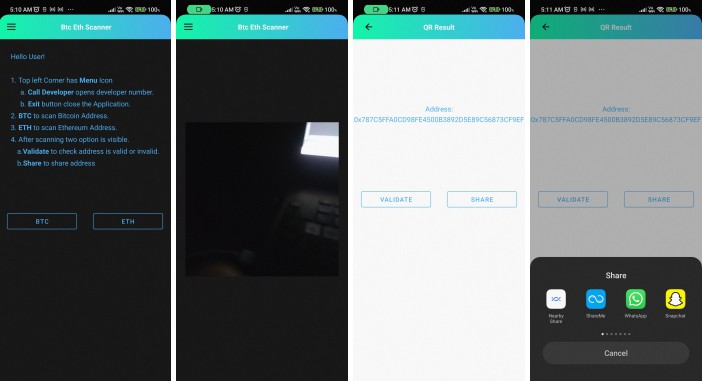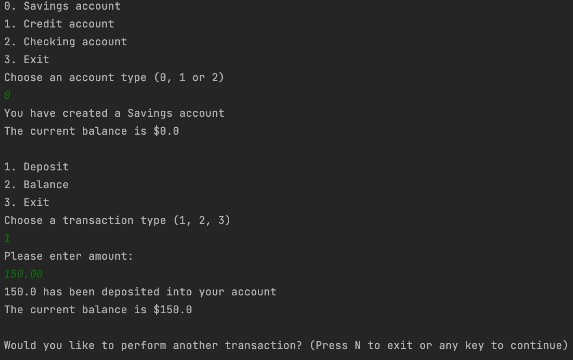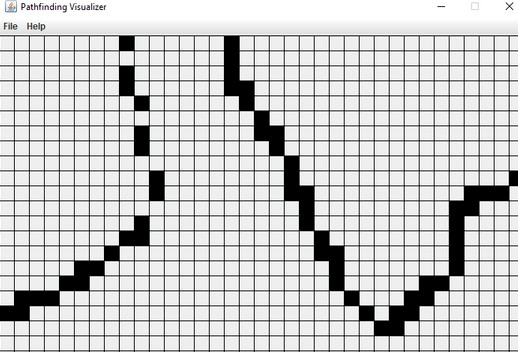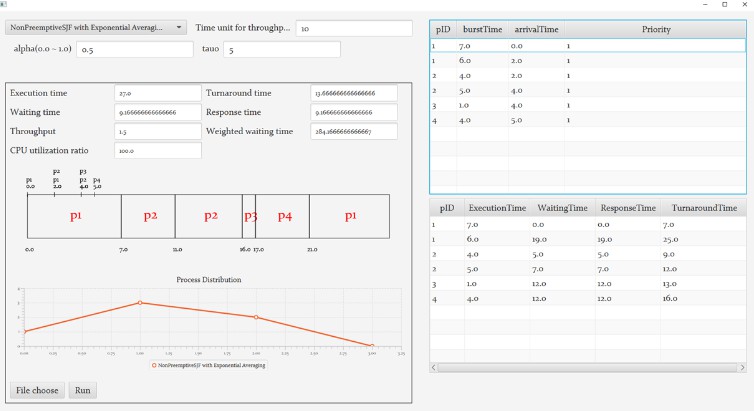ENG | RUS
VisualFSM is a Kotlin library that implements an MVI architecture
(Model-View-Intent)[1] and a set of tools for visualization and analysis of
FSM‘s (Finite-state machine)[2] diagram of states.
The graph is being built from source code of FSM‘s implementation. There is no need of custom written configurations for FSM, you can just create new State and Action classes, they would be automatically added to the graph of States and Transitions.
Source code analysis and the graph built are being performed with reflection and declared as a separate module that would allow it to be connected to testing environment.
Setup
Base classes for Android, JVM and KMM projects (Feature and AsyncWorker coroutines edition)
implementation('ru.kontur.mobile.visualfsm:visualfsm-core:1.0.0')
Support of RxJava 3 (FeatureRx, AsyncWorkerRx and dependent classes)
implementation('ru.kontur.mobile.visualfsm:visualfsm-rxjava3:1.0.0')
Support of RxJava 2 (FeatureRx, AsyncWorkerRx and dependent classes)
implementation('ru.kontur.mobile.visualfsm:visualfsm-rxjava2:1.0.0')
Tools for graph creation and analysis
testImplementation('ru.kontur.mobile.visualfsm:visualfsm-tools:1.0.0')
VisualFSM Pros
Visualization of FSM graph
Visualization lets you spend less time on understanding complex business process and makes it easier for debugging, adding new features, and refactoring old ones.
A simplified FSM graph sample of user authorization and registration.
Analysis
Validation on reachability for all states, on set of terminal states and lack of unexpected dead-end states, custom graph checks in unit tests.
Managing asynchronous operations
Every async work can be represented by separate states, because of this we can have a common set of states that are lining up to a directed graph.
An AsyncWorker allows you to simplify the processing of states with asynchronous work.
Structure of VisualFSM
The main entities are State, Action, Transition, Feature, AsyncWorker, TransitionCallbacks.
State of VisualFSM
State is an interface to mark State classes.
Action of VisualFSM
Action is a base class for action, used as an input object for FSM and describes the transition
rules to other states by Transition classes. A state is being selected depending of the current
FSM’s State and provided predicate (the predicate function). There are two scenarios that would
say the transition rules were set wrong:
- If there are several
Transitions that would fit the specified conditions: aStatethe FSM was in is inside aTransitionand apredicatereturnstrue— there would be an error passed to aTransitionCallbacks,onMultipleTransitionErrorwould be called, and the first suitableTransitionwould be executed. - In case no
Transtionwill do, an error would be passed to aTransitionCallbacks,onNoTransitionErrorwould be called, and aStatewon’t be changed.
Transition of VisualFSM
Transition is a base transition class and is declared as an inner class in an Action. There must
be two generic States for every Transition: a State, the one the transition is going from, and
a State that is going to be current for FSM after a transofrm execution.
For the inherited classes of Transition you need to override a transform method and
a predicate method, but predicate must be overridden only if you have more than one Transition
with similar start States.
The predicate and transform functions of Transition
predicatedescribes the conditions of aTransition‘s choice depending on input data that was passed to anAction‘s constructor. It is a one of conditions for the choice ofTransition. The first condition is that the currentStatehas to be the same as theTransition‘s startStatewhich was specified in generic. You might not to overridepredicateif you don’t have more than oneTransitionwith matching startStates.transformcreates a newStatefor aTransition.
AsyncWorker of VisualFSM
AsyncWorker controls the start and stop of async tasks. AsyncWorker starts async requests or
stops them it it gets specified State via a subscription. As long as the request completes with
either success or error, the Action will be called and the FSM will be set with a new State. For
convenience those states that are responsible for async tasks launch, it is recommended to join them
in AsyncWorkState.
To subscribe to State, you need to override the onNextState method, and for each state to construct
AsyncWorkerTask for processing in the AsyncWorker.
For each operation result (success and error) you must call the proceed method and pass Action to handle the result.
Don’t forget to handle each task’s errors in onNextState method, if an unhandled exception occurs,
then fsm may stuck in the current state and the onStateSubscriptionError method will be called.
There might be a case when we can get a State via a subscription that is fully equivalent to
current running async request, so for this case there are two type of AsyncWorkTask:
- AsyncWorkerTask.ExecuteIfNotExist – launch only if equivalent operation is not currently running (priority is given to a running operation)
- AsyncWorkerTask.ExecuteAndCancelExist – relaunch async work (priority is for the new on).
To handle a state change to state without async work, you must use a task:
- AsyncWorkerTask.Cancel – stop asynchronous work, if running
Feature of VisualFSM
Feature is the facade for FSM, provides subscription on current State, and
proceeds incoming Actions.
TransitionCallbacks of VisualFSM
TransitionCallbacks gives access to method callbacks for third party logic. They are great for
logging, debugging, metrics, etc. on five available events: when Action is launched,
when Transition is selected, a new State had been reduced, and two error events —
no Transitions or multiple Transitions available.
Sample of usage
A sample FSM of authorization and registration of a user: sample.
A tests sample for FSM of user authorization and registration: AuthFSMTests.kt.
The DOT visualization graph for graphviz is being generated using the VisualFSM.generateDigraph(...) method.
For CI visualization use graphviz, for the local visualization (on your PC) use webgraphviz.
AuthFeature
// Use Feature with Kotlin Coroutines or FeatureRx with RxJava
class AuthFeature(initialState: AuthFSMState) : Feature<AuthFSMState, AuthFSMAction>(
initialState = initialState,
asyncWorker = AuthFSMAsyncWorker(AuthInteractor()),
transitionCallbacks = TransitionCallbacksImpl() // Tip - use DI
)
val authFeature = AuthFeature(
initialState = AuthFSMState.Login("", "")
)
// Observe states on Feature
authFeature.observeState().collect {state -> }
// Observe states on FeatureRx
authFeature.observeState().subscribe {state -> }
// Proceed Action
authFeature.proceed(Authenticate("", ""))
AuthFSMState.kt
All States are listed in a sealed class. For the convenience States that call async work is
recommended to group inside inner AsyncWorkState sealed class.
sealed class AuthFSMState : State {
data class Login(
val mail: String,
val password: String,
val errorMessage: String? = null
) : AuthFSMState()
data class Registration(
val mail: String,
val password: String,
val repeatedPassword: String,
val errorMessage: String? = null
) : AuthFSMState()
data class ConfirmationRequested(
val mail: String,
val password: String
) : AuthFSMState()
sealed class AsyncWorkState : AuthFSMState() {
data class Authenticating(
val mail: String,
val password: String
) : AsyncWorkState()
data class Registering(
val mail: String,
val password: String
) : AsyncWorkState()
}
data class UserAuthorized(val mail: String) : AuthFSMState()
}
AuthFSMAsyncWorker.kt
AsyncWorker subscribes on state changes, starts async tasks for those in AsyncWorkState group, and
calls Action to process the result after the async work is done.
class AuthFSMAsyncWorker(private val authInteractor: AuthInteractor) : AsyncWorker<AuthFSMState, AuthFSMAction>() {
override fun onNextState(state: AuthFSMState): AsyncWorkerTask<AuthFSMState> {
return when (state) {
is AsyncWorkState.Authenticating -> {
AsyncWorkerTask.ExecuteAndCancelExist(state) {
val result = authInteractor.check(state.mail, state.password)
proceed(HandleAuthResult(result))
}
}
is AsyncWorkState.Registering -> {
AsyncWorkerTask.ExecuteIfNotExist(state) {
val result = authInteractor.register(state.mail, state.password)
proceed(HandleRegistrationResult(result))
}
}
else -> AsyncWorkerTask.Cancel()
}
}
}
HandleRegistrationResult.kt
HandleRegistrationResult is one of Actions of the sample authorization and registration FSM that
is called from AsyncWorker after the result of registration is received. It consists of
two Transitions, the necessary Transition is chosen after predicate function result.
class HandleRegistrationResult(val result: RegistrationResult) : AuthFSMAction() {
inner class Success : AuthFSMTransition<AsyncWorkState.Registering, Login>(
AsyncWorkState.Registering::class,
Login::class
) {
override fun predicate(state: AsyncWorkState.Registering) =
result == RegistrationResult.SUCCESS
override fun transform(state: AsyncWorkState.Registering): Login {
return Login(state.mail, state.password)
}
}
inner class BadCredential : AuthFSMTransition<AsyncWorkState.Registering, Registration>(
AsyncWorkState.Registering::class,
Registration::class
) {
override fun predicate(state: AsyncWorkState.Registering) =
result == RegistrationResult.BAD_CREDENTIAL
override fun transform(state: AsyncWorkState.Registering): Registration {
return Registration(state.mail, state.password, "Bad credential")
}
}
inner class ConnectionFailed : AuthFSMTransition<AsyncWorkState.Registering, Registration>(
AsyncWorkState.Registering::class,
Registration::class
) {
override fun predicate(state: AsyncWorkState.Registering) =
result == RegistrationResult.NO_INTERNET
override fun transform(state: AsyncWorkState.Registering): Registration {
return Registration(state.mail, state.password, state.password, "No internet")
}
}
override val transitions = listOf(
Success(),
BadCredential(),
ConnectionFailed(),
)
}
AuthFSMTests.kt
class AuthFSMTests {
@Test
fun generateDigraph() {
println(
VisualFSM.generateDigraph(
baseAction = AuthFSMAction::class,
baseState = AuthFSMState::class,
initialState = AuthFSMState.Login::class,
)
)
Assertions.assertTrue(true)
}
@Test
fun allStatesReachableTest() {
val notReachableStates = VisualFSM.getUnreachableStates(
baseAction = AuthFSMAction::class,
baseState = AuthFSMState::class,
initialState = AuthFSMState.Login::class,
)
Assertions.assertTrue(
notReachableStates.isEmpty(),
"FSM have unreachable states: ${notReachableStates.joinToString(", ")}"
)
}
@Test
fun oneFinalStateTest() {
val finalStates = VisualFSM.getFinalStates(
baseAction = AuthFSMAction::class,
baseState = AuthFSMState::class,
)
Assertions.assertTrue(
finalStates.size == 1 && finalStates.contains(AuthFSMState.UserAuthorized::class),
"FSM have not correct final states: ${finalStates.joinToString(", ")}"
)
}
}
What is MVI
MVI stands for Model-View-Intent. It is an architectural pattern that utilizes unidirectional
data flow. The data circulates between Model and View only in one direction – from Model
to View and from View to Model.
What is FSM
A finite-state machine (FSM) is an abstract machine that can be in exactly one of a finite number
of states at any given time. The FSM can change from one state to another in response to some
inputs.










